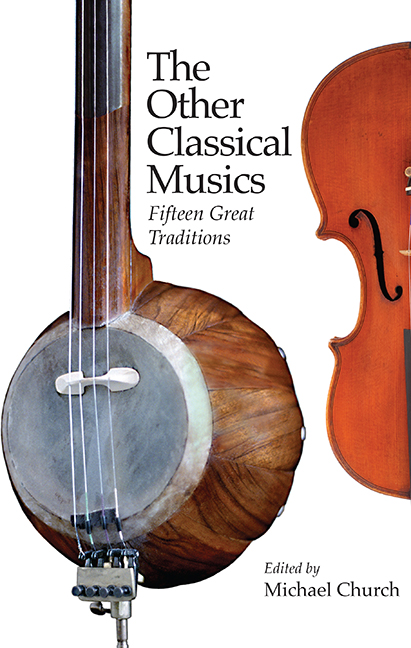Book contents
- Frontmatter
- Dedication
- Contents
- List of Illustrations
- List of Contributors
- Preface and Acknowledgements
- Introduction
- Maps
- 1 Thailand, Laos, Cambodia, Vietnam
- 2 Java
- 3 Japan
- 4 China: The Guqin Zither
- 5 Chinese Opera
- 6 North India
- 7 South India
- 8 Mande Jaliyaa
- 9 North American Jazz
- 10 Europe
- 11 North Africa and the Eastern Mediterranean: Andalusian Music
- 12 The Eastern Arab World
- 13 Turkey
- 14 Iran
- 15 Uzbekistan and Tajikistan
- Notes
- Bibliographies
- Index
12 - The Eastern Arab World
Published online by Cambridge University Press: 29 May 2021
- Frontmatter
- Dedication
- Contents
- List of Illustrations
- List of Contributors
- Preface and Acknowledgements
- Introduction
- Maps
- 1 Thailand, Laos, Cambodia, Vietnam
- 2 Java
- 3 Japan
- 4 China: The Guqin Zither
- 5 Chinese Opera
- 6 North India
- 7 South India
- 8 Mande Jaliyaa
- 9 North American Jazz
- 10 Europe
- 11 North Africa and the Eastern Mediterranean: Andalusian Music
- 12 The Eastern Arab World
- 13 Turkey
- 14 Iran
- 15 Uzbekistan and Tajikistan
- Notes
- Bibliographies
- Index
Summary
As the orchestra and chorus take the stage – the men in tuxedos, the women in traditional gowns – people in the audience call out to their favourites, particularly the tambourine player who is the sole percussionist; the maestro emerges to applause. After an initial instrumental piece, songs dominate, presented by the male and female choruses standing behind the orchestra, or by vocal duets or trios at the front of the stage; after a while there is an extended solo improvisation. The audience listens quietly, having been schooled in the Western way to save applause until the end of each piece; with a ritual wave of their programmes, people demand repeats of their favourite songs. Western string instruments – violins, cellos and double bass – predominate, though their long-time presence in this culture gives the orchestra a traditional feel. Indigenous instruments – reed flute, lute, zither and tambourine – fill out the ensemble, adding textures that keep the overall sound decidedly local. This sense is intensified by the use of more than twelve notes per octave: the ‘extra’ non-Western notes help build an atmosphere of enchantment.
THE art music of the eastern Arab world has a long and dynamic history: with roots going back two millennia, it has evolved greatly over time and continues to evolve today. Concentrated in Cairo, Beirut, Damascus and Aleppo, it has many shared features across the region; we may think of it as a single tradition, but there are local variations. The shared features include scales and rhythms, instruments, types of ensemble, repertoire and performance contexts. As such, the above description – of a 1980s performance by the Arabic Music Ensemble in Cairo – could represent similar concerts in many parts of the eastern Arab world. Yet compositions by the Egyptian Sayyid Darwīsh and Muḥ ammad ‘Abd al-Wahhāb, for example, are regarded as distinctly Egyptian; performances by the singer Fayrouz are felt to exhibit a uniquely Lebanese character; and traditional songs performed by the Aleppan singer Ṣabāḥ Fakhrī are regarded as reflecting a quintessentially Syrian tradition. Thus do styles differ within this shared music.
Early history
The history of Arab music predates the birth of Islam. Early vocal and poetic traditions from nomadic tribes and flourishing urban centres like Mecca were further developed in opulent court settings from the seventh century, first in Damascus, the capital of the Umayyad dynasty (661–750), and then in the Abbasid-dynasty capital, Baghdad (750–1258).
- Type
- Chapter
- Information
- The Other Classical MusicsFifteen Great Traditions, pp. 270 - 293Publisher: Boydell & BrewerPrint publication year: 2015
- 1
- Cited by

